Fri, 12 Sep 2014 . Last updated Thu, 25 Jun 2015 08:48
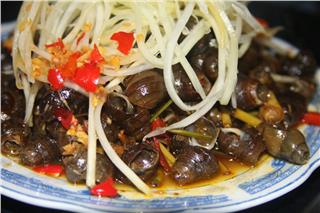
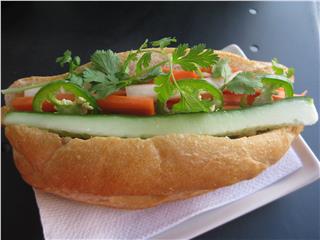


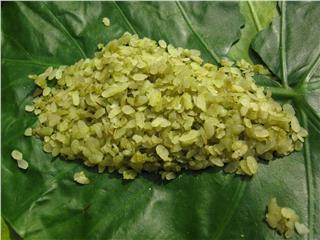

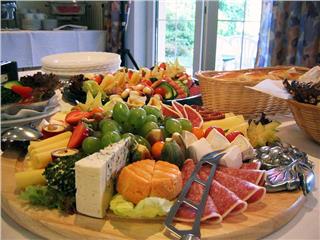
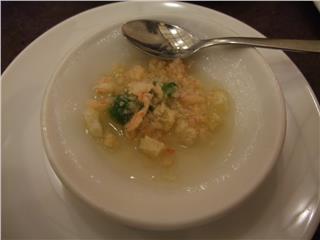

Phong Dien district in the Mekong Delta province of Can Tho is the home to numerous large fruit gardens that provide a variety of delicious fresh fruits all year round. The local people here have been working really hard to build up the brand name of Phong Dien fruits. Fruit orchards are unique specialty of the Mekong Delta and Phong Dien district in Can Tho is the tropical paradise to those who want to taste of natural sweetness. Fruits from these gardens are supplied to the floating markets of Can Tho as well as the market across the country. It is also the true heaven for those who love nature and love to eat.
Today, I have chance to visit Be Tu’s fruit garden, one of the largest gardens in the area. Getting around the garden I feel very comfortable, walking around as a visitor to experience another one Mekong Delta specialty, the monkey bridge, a handmade bridge that is just one bamboo tube wide. After a few minutes of walking, I am now in the uncle Be Tu’s garden, the home to hundreds of fruit trees in Phong Dien district. It is thousand a meter square area supplying season of fruits such as rambutan, star apple, durian and Ha Chau Baccaurea. Summer is the time of with most variety of fruits.
Uncle Be Tu has been worked in the garden for several decades now. Each season, each tree can harvest about 200 kilos of milk fruits. A ripe fruit will not be green. It will be slightly brown. The difference between milk fruits grown here and other places is the fruits here grown from a species that is called Lo Ren taken from Tien Giang province, in the Mekong Delta. Compared to fruits grown from seeds elsewhere, this species of milk fruit yield is bigger, fleshier and sweeter fruits.
To harvest milk fruit local people use a special harvesting device. There is a knife-like pair of clippers at the tip of this device. The clippers are meant to clip off the stem of the fruit. You have to pull the string to make it work.
In the same orchard garden I discover a surprising way to feed fish. A basket is filling with fish food and lowered down to the pond to feed fish. Fish food is the combination of scrap flour, leftovers from the cake making and rice. In the fruit farm, there are a lot of small ponds. Fishing right inside the fruit garden is also a one of traditions in the Mekong Delta region.
Reporter: Are the ponds natural or did you have to dig them?
Uncle Be Tu: We had to dig them and put the fish in the ponds.
Reporter: So things function like a circular ecosystem here? You use the water to water the plants? I am seeing one pond with each row of trees. Is there a reason for that?
Uncle Be Tu: That’s right! Every pond, or small creek I would call it, needs t have stable sides. So with each creek we dig, we will accumulate earth on each side and grow plants there to keep the soil stable.
Reporter: I read somewhere that tourists like to come to orchards to enjoy fruits, after which they will fish, and grill the fish right on the spot.
Uncle Be Tu: You are right. In a few minutes, we will get a fish and we can grill the fish to eat!
It is probably my first time I experienced grilling fish in the wild. Growing up, I never have the chance to experience at a farm like this. Sitting to grill fish in the middle of nature have surely brought me an unforgettable and sweet experience. Also, I discover a secret grilling fish. You should wrap the fish in banana leaves. The charcoaled leaves will protect the meat from the heat and marinate the fish with a distinctive aroma. Picking fruits from the tree, fishing and grilling the fish, I feel like I am having a taste in the both Mekong Delta culture and its flavor.
Reporter: Hello! Uncle Be Tu just told me you’re making the “Tuong Ieu” congee. I have never heard of the name before. Can you explain it to me?
Mrs. Thuan: The name has been around for so long and I don’t really know its origins. It is made up of parts of the pig though.
Reporter: So the congee dish contains pork meat and pig intestines?
As you known, the main ingredient of this congee is pig intestines. Apart from pig intestines, the ingredients also include pork meat, pig liver and others. All ingredients are come from the healthy pigs and cleaned well before cooking. This dish is often cooked during funerals or weddings. Often times, people will enjoy the intestines firs, with alcohol or beer. They are easy to digest and will not fill you up. Then people will enjoy the congee.
After these ingredients are sliced, they will be fried in hot pan, and then mixed with blood putting. Frying intestines is probably the most important step when making the “Tuong Ieu” porridge. Because the porridge will not be flavored, so the taste of the porridge will completely depend on the fried meat. The final step is to combine the sauté intestines and the cooked pork meat together. Talking about taste, people in Mekong Delta has interesting way of enjoying food.
Don Ca Tai Tu is a form of traditional folk art in Mekong Delta. It is now UNESCO intangible culture heritage of humanity. It combines stories of the daily life in the warm and fine of vocal melody and sharp sound in the music. There is nothing better than having the chance to sit in the fruit garden, enjoy specialties of Mekong River Delta and listen to Don Ca Tai Tu.
Source: VTV4 – VTV.vn

 Đặt vé máy bay cho người Việt?
Bấm vào đây
Đặt vé máy bay cho người Việt?
Bấm vào đây
Our service uses cookies for technical, analytical and marketing purposes. See our Cookie và Privacy policies for more information. If you agree to this, just keep browsing.


